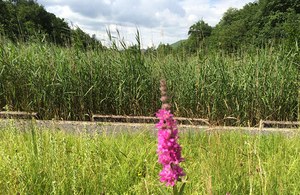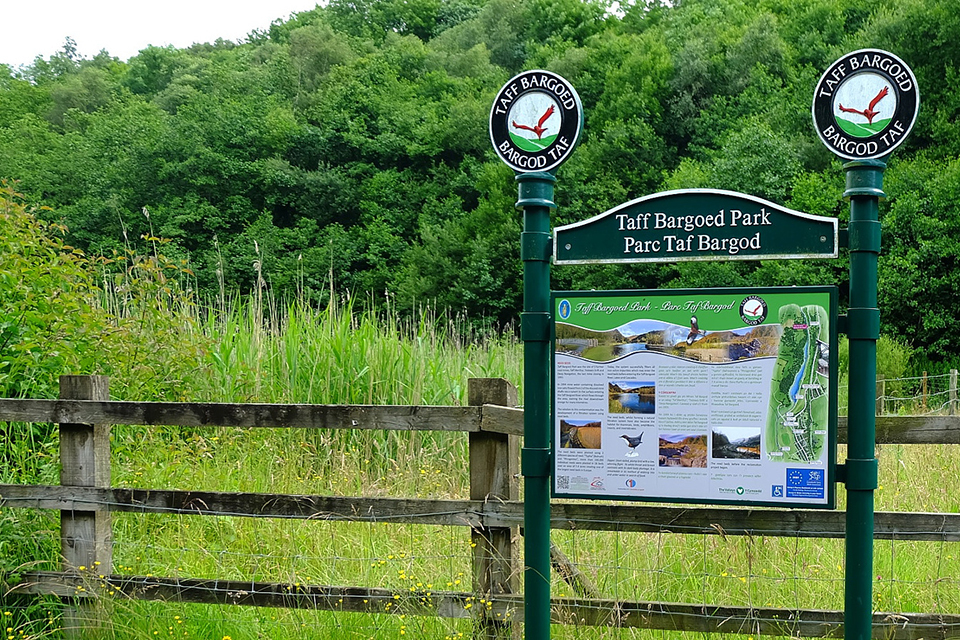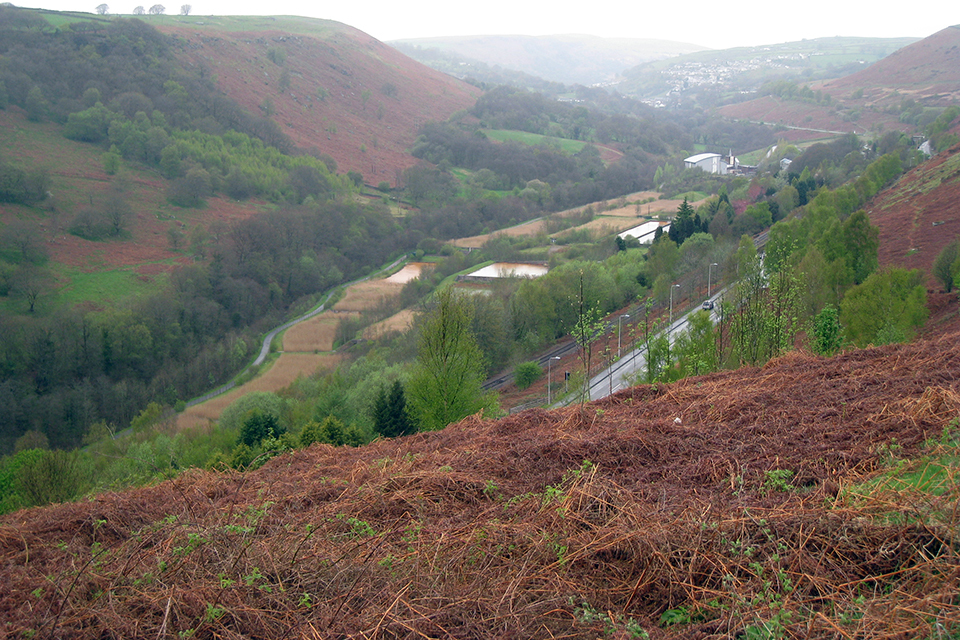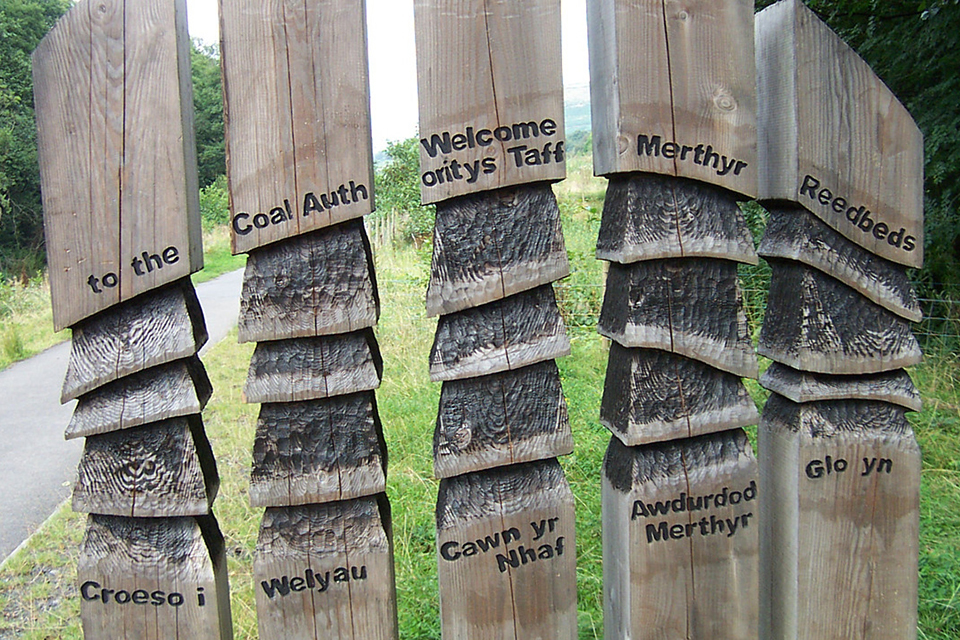Taff Merthyr mine water treatment scheme
Our Taff Merthyr mine water treatment scheme, near Trelewis, Merthyr Tydfil, protects the Taff Bargoed from pollution from an abandoned coal mine.

One of the reed beds at the Coal Authority's Taff Merthyr mine water treatment scheme.
Taff Merthyr – one of the Mining Remediation Authority’s largest treatment schemes – uses natural or “passive” methods, such as settlement lagoons and reed beds, to remove iron from mine water that was polluting the Taff Bargoed and community park lakes.
The site is located within the wider reclamation area of the former Taff Merthyr, Deep Navigation and Trelewis collieries.
A year after the collieries closed in 1993 and the pumps that kept them dry were switched off, iron-rich mine water started to flow directly into the Taff Bargoed, polluting 4km of the river.
When assessed by the Environment Agency (now Natural Resources Wales), this coal mine discharge was ranked at number 3 on a priority list of sites requiring treatment in England and Wales.
Construction of the £1.2 million scheme started in 1999 and was completed in the summer of 2001.

Taff Bargoed Millennium Park, a major land reclamation project undertaken by Merthyr Tydfil and Rhonnda Cynon Taff County Borough Councils, together with Groundwork Merthyr.
Today it forms a key part of the Taff Bargoed Millennium Park – a major land reclamation project undertaken by Merthyr Tydfil and Rhonnda Cynon Taff county borough councils, together with Groundwork Merthyr.
Our extensively landscaped 7 hectare site, which is surrounded by a cycle path and footpaths, features:
- 4 individual settlement ponds - at a total of 1.2 hectares
- 16 individual reed beds - at a total of 3.2 hectares
- 100,000 plants
As the park is a well-used community facility – today the area has fishing lakes, canoe slaloms and a climbing centre – it was important our scheme contributed to the general improvement of the surrounding area.

The Coal Authority's extensively landscaped 7 hectare site, which is surrounded by a cycle path and footpaths, features 4 individual settlement ponds (a total of 1.2 hectares) and 16 individual reed beds (a total of 3.2 hectares).
In 2018, we installed 108 solar panels to reduce the site’s carbon footprint and help cut the electricity bills for pumping the polluted mine water from the pit.
It is estimated that over 25 years these will provide more than 600,000 kW hours of electricity, saving around £100,000 on electricity purchase and reducing CO2 emissions by more than 300 tonnes.
How our scheme improved biodiversity
Studies in 1998 found the site was largely unvegetated – mainly large, abandoned terraces of bare ground enclosing the old mine workings and associated colliery spoil – with little to offer wildlife.
However, it now supports a mosaic of habitats and the reed beds in particular, because they are not common to the area, have improved biodiversity, providing valuable wildlife havens for many different species of flora and fauna.
Since the scheme was built, there has been an increase in the number of birds, including the reed bunting, sedge warbler, willow warbler, black cap, grey wagtail, water rail and song thrush.

One of the settlement ponds at the Coal Authority's Taff Merthyr mine water treatment scheme.
Between the treatment pools, which provide a habitat for a range of invertebrate and amphibian species, there is dense scrub, containing willow and alder trees.
This helps to connect to nearby mature deciduous woodland, whose ancient oaks can support a range of invertebrates and offer potential for roosting bats.
There are also areas of grassland containing Yorkshire fog grass, perennial rye grass, stinging nettle, common vetch, cuckoo flower and creeping buttercup.

A sign welcoming visitors to the Coal Authority's Taff Merthyr reed beds.
These offer a habitat for a range of invertebrates, including butterflies, and other groups of fauna, such as reptiles and small mammals, which in turn create foraging opportunities for raptors such as kestrel.
The scheme has improved the quality of the Taff Bargoed and by our site the river now runs clear, meaning it can support a range of aquatic invertebrates. In addition, fish such as brown trout have been reintroduced.
Otter spraint – or dung – has also been recorded nearby and, given the site’s location and how suitable it is for the species to commute and forage, it is highly likely the mine water treatment scheme is now used by otters.

The treated water being returned to Taff Bargoed.